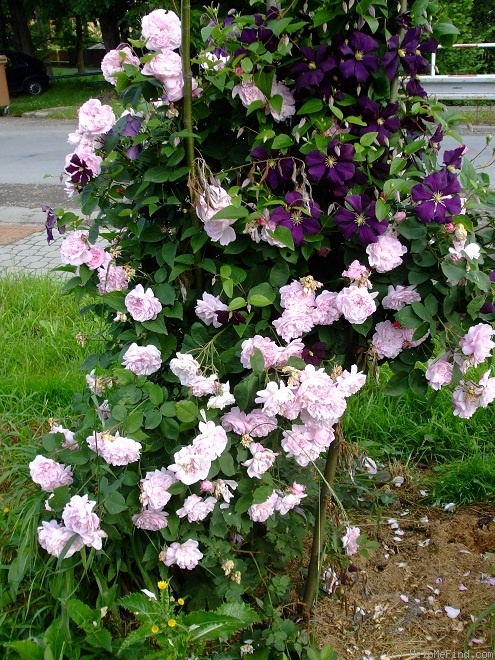|
|
"Fantin-Latour" rose Description

Photo courtesy of Eva Trifon
HMF Ratings:
73 favorite votes.
Average rating:
EXCELLENT-.
Bloom:
Light pink, darker center. Strong fragrance. Average diameter 3.5". Large, double (17-25 petals), cupped, old-fashioned, rounded bloom form. Once-blooming spring or summer.
Habit:
Tall, arching, bushy, spreading. Dark green foliage.
Height: 3' to 6' (90 to 185cm). Width: 4' to 6' (120 to 185cm).
Growing:
USDA zone 4b through 9b. Can be used for cut flower, garden or landscape. A good subject for pegging. can be trained as a climber. Disease susceptibility: susceptible to Mildew. Prune after flowering is finished. Prune lightly until this rose gets established (about two years), then prune it back by about a third.. Remove unproductive wood every third year or so. This rose blooms on old wood.
Patents:
Patent status unknown (to HelpMeFind).
Notes:
Derek Fell, the photographer and author, wrote a review of his latest book, Impressionist Roses, in the December 1999 issue of “Nouveau” magazine (nouvomag@bellatlantic.net). This is what he had to say about Fantin-Latour...
The focus of the book is roses that were either planted or painted by the great French Impressionist artists, especially Monet, Renoir, Cézanne, Fantin-Latour and Calliebotte...
At the art museum of Princeton University, I found eleven reference books on the least-known of the Impressionist circle, Fantin-Latour... One book said he died in his Paris apartment, while another said he died at a weekend cottage, Croix Fantin, in the village of Bure, where he cultivated a rose garden! Burning with curiousity, I set out for Bure and in the churchyard found his grave... I began driving down narrow winding country roads looking for clues to his cottage, when I spotted a shiny brass cross sticking through a hedge. I pulled in the driveway to find a family having lunch on the terrace of a beautiful brick-and-timber house covered in Boston ivy. The owners were having a family reunion with three grown children and their spouses, and they confirmed that yes, indeed, this had been the country home of Fantin-Latour; and yes, he had died in the rose garden which stretched beyond the terrace -- an area now mostly devoted to lawn. He had felt ill while taking lunch on the terrace, walked into the garden and collapsed amongst his roses!
... Fantin-Latour was little-known in France at the time of his death, for his entire output of paintings -- numbering some 700 floral still lifes -- was taken every year for sale to English art patrons. He was so well respected in England for his paintings of roses that an English nurseryman named a rose for him, ‘Fantin-Latour’. A large, pale-pink shrub rose, it has a swirling petal pattern and a wonderful fruity fragrance...
|